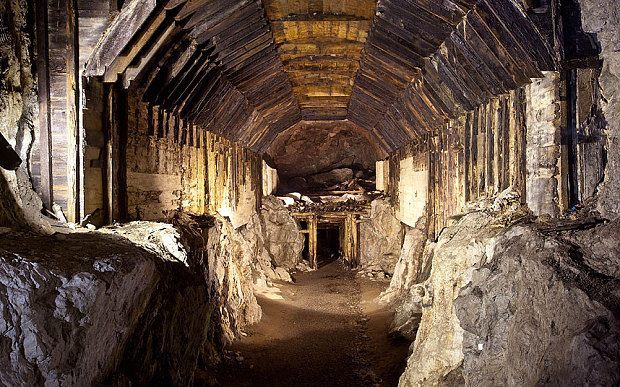A recent claim by two men that a Nazi train laden with gold has been found buried beneath a Polish castle has gained significant credibility, with Poland’s deputy culture minister stating that he is “99 per cent certain” the story is true.
It has been suggested that the men learned of the location of the train via a deathbed confession.
The men, a Pole and a German according to local news sources, last week informed authorities in the Polish town of Walbrzych, two miles from Książ Castle, that they found the train in an underground tunnel.
Newsweek Polska has reported that the men have provided dozens of photos from inside the tunnel as evidence, and estimated its value at €1.2b (£877m).
Although stories about a secret train laden with gold and valuable collected by the Nazis has circulated in the region for decades, no proof has ever been found that the train even exists, let alone of its whereabouts. Consequently, the men’s news was greeted with scepticism from historians and the authorities alike.
Zygmunt Nowaczyk, the deputy mayor, said that lawyers hired by the men, who wanted to claim ten percent of the value as a finders’ fee, hadn’t offered any proof of the alleged discovery. However, passed on the information he had to the national government because if found, the train would be state property.
In a press conference this morning, Piotr Zuchowski, head of conservation at the culture ministry informed reporters that one of the people who took part in hiding the train confirmed its existence during a deathbed confession – the identity of that person is not known – and that the exact location of the train was subsequently pinpointed using ground penetrating radar.
The train is along a 4km stretch of track on the Wroclaw-Walbrzych line, Zuchowski said, is 100 metres long, and is protected by armour. “The fact that it is armoured indicates it has a special cargo,” he said, but added “We do not know what is inside the train. Probably military equipment but also possibly jewellery, works of art and archive documents.” He said he was “99 per cent convinced” of its existence.
Yesterday Mr Zuchowski was forced to urge treasure hunters to stay away from the region over fears that the area could be mined. In a statement, he said: “In connection with the published information referring to the find of the so-called ‘gold train’ in the region of Walbrzych, an increase in the activity of treasure hunters has been observed.
“I am appealing to people to stop any such searches until the end of official procedures leading to the securing of the find. Inside the hidden train — of whose existence I am convinced — there could be dangerous materials from the time of World War II. There is a great chance that the train is mined.”
According to the Telegraph’s Matthew Day, the region around Walbrzych could easily conceal a large train. “During the war the Germans dug miles of tunnels into the hills and mountains around Walbrzych. Historians differ on why this was done. Some say they were creating a secret command centre, others say they were underground factories for weapons, while others claim the tunnels were research sites for the atom bomb project.
“But there are tunnels: some of them very big. At the end of the war the Germans flooded or blew up a number of them. As a result not all the tunnels have been explored.”
The train may have been undetected thus far because it is well buried within the mountain. If that is the case, it is likely to take months to dig out. Nonetheless, calls have already been made for the Polish government to restore any works of art or other valuables to its rightful owner.
Jerome Hasler, head of communications and strategy for the Art Recovery Group, said: “We are still waiting for the facts to be established but we very much hope that it this is a legitimate find.
“Not only would this train present great historical significance, but all opportunities to identify and restitute property looted during the Nazi era must be welcomed. If the find is confirmed, we encourage the Polish authorities to share information about any works of art recovered so that any restitution efforts can begin in earnest.”
Mr Zuchowski has promised to return any valuables found “to owners if they can be identified.”
Experts are warning that any gold found may be in the form of tooth fillings, rather than of pristine bullion.

COMMENTS
Please let us know if you're having issues with commenting.